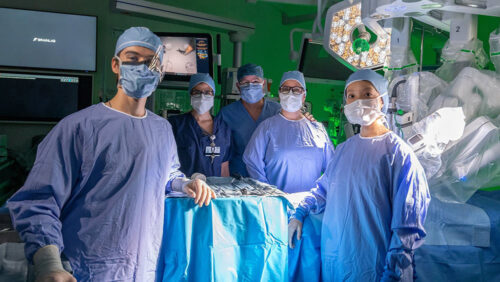Rochester Regional Health completes 1,000th robotic thoracic surgery

Rochester Regional Health (RRH) has reached a milestone, successfully completing its 1,000th robotic thoracic surgery, making it the first health system in Western New York to achieve this distinction.
Robotic thoracic surgery uses robotic-assisted technology and precision instruments to perform complex heart and lung procedures through small incisions. Compared to traditional open-chest surgery, this minimally invasive approach offers patients reduced pain, faster recovery times and minimal scarring.
“This milestone is a testament to our team’s dedication to advancing thoracic care through innovation and excellence,” said G. Randall Green, MD, JD, MBA, Rochester Regional Health Executive Medical Director Sands-Constellation Heart Institute. “By utilizing advanced robotic technology, we are able to offer our patients a minimally invasive option that leads to an improved quality of life. We are proud to be at the forefront of this technology, bringing world-class surgical care to our community.”
RRH is one of the most experienced health systems in the country using the robotic da Vinci® Surgical System for a wide range of procedures including colorectal, gynecologic and urologic, and general surgery. It was also the first hospital system in the Greater Rochester area to perform a complete robotic esophagectomy – a procedure that removes most of the esophagus and reconstructs it using a portion of the stomach.
RRH thoracic surgeons Veronica Shuyin Liang, MD and Neal Chuang, MD continue to break ground in robotic surgery. They were the first in Rochester to successfully perform sleeve lobectomies and complex re-do foregut procedures. These RRH physicians are sharing their expertise across the health system, training more colleagues in robotic surgery to expand access to cutting edge care.
“Our ability to perform highly complex cardiothoracic procedures robotically means that patients who may not have been candidates for traditional surgery now have access to life-changing treatment with shorter hospital stays and faster recovery times,” said Dr. Liang. “We are excited to continue expanding this program and training the next generation of surgeons in robotic techniques.”
Provided information





